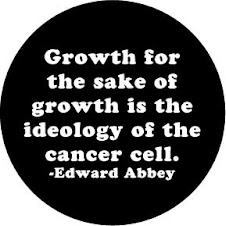Where does the electricity you use come from?
"America's Most Endangered Mountains - Coal River Mountain, WV
Pledge to Help End Mountaintop Removal. Visit:
www.iLoveMountains.org"
- - - COMMUNITY STORY - - -
"We don't live where they mine coal. They mine coal where we live.... Our concern today is our homes, our environment, and the sustainability of the environment."
Lorelei Scarbro's house in the little community of Rock Creek, West Virginia is the same house her husband built with his own two hands when they were married, on land handed down to him from his parents. They raised their children in this house. Lorelei watches the deer in the field below, enjoys a fresh mountain stream running by the property and says that her granddaughter takes particular delight in the wild turkeys that frequent the neighborhood. Her husband, a coal miner for 35 years who died of of black lung, is buried in the family cemetery next to their home.
Lorelei's property in Rock Creek borders Coal River Mountain, one of the most beautiful mountains in the Coal River Valley of West Virginia, and one of the few untouched mountains in the region. Miles of pristine creeks and waterfalls, horseback trails and stunning vistas are often overlooked as a prime eco-tourism location.
Now Coal River Mountain is slated for a mountaintop removal coal mine. If the coal company's plans go through, nearly 10 square miles of the mountain will be destroyed, and 18 valley fills will devastate the Coal River watershed.
But residents in the Coal River Valley have joined together to propose a new idea - one of sustainable energy. In 2006, a study of the wind potential on Coal River Mountain demonstrated that the mountain is an ideal location for developing utility-scale wind power.
The proposed Coal River Wild Project would produce enough wind power to keep the lights on in 150,000 homes, pump $20 million per year in direct local spending during construction, and $2 million per year thereafter. It would create hundreds of jobs and allow other uses of the land that would benefit local communities. Sustainable forestry, tourism, and harvesting of ginseng and other wild plants are just a few options for Coal River residents that would ultimately preserve the natural environment of Coal River Mountain for generations to come."
What have you done today to lower your impact?
We are washing away the foundations of our existence on every front. It is high time we move from crashing about on the planet like a bull in china shop and find a way to go forward with intent. We must find systems of living based on sustainability. The systems and tools exist, it is up to each of us to adopt them.
Blog Archive
-
▼
2009
(353)
-
▼
November
(23)
- World Oil Production Forecast - Update November 2009
- Video - Contraction and Convergence animation from...
- My permaculture education begins!
- Video - Ted Talks - Rob Hopkins - Transition to a ...
- Videos - Tim Jackson - Prosperity without growth
- Video - Ted - Rachel Pike: The science behind a cl...
- Video - FAIR FOOD: FIELD TO TABLE
- The climate train has left the station.
- Video - Princes Rainforest Project - Prepare for C...
- Video - California could dry up and blow away
- Transition Bermuda solar batch heater wins an inno...
- Video - Cole's Carbon Credit Clearing House
- Dirty Coal, at it again!
- IEA has been intentionally misleading us about pea...
- Video - RMI 125 Corporate Leadership and restorati...
- Restorative Business
- Video - Hatchery Horrors
- video - Earthships 1/3 Michael Reynolds The Garbag...
- Half measures won't cut it! Business as Usual is out.
- Video - Coal River Mountain, WV: Coal River Wind P...
- The Official Meatrix I
- The Official Meatrix II: Revolting
- The Official Meatrix II ½
-
▼
November
(23)
Monday, 2 November 2009
Subscribe to:
Post Comments (Atom)




.jpg)







No comments:
Post a Comment